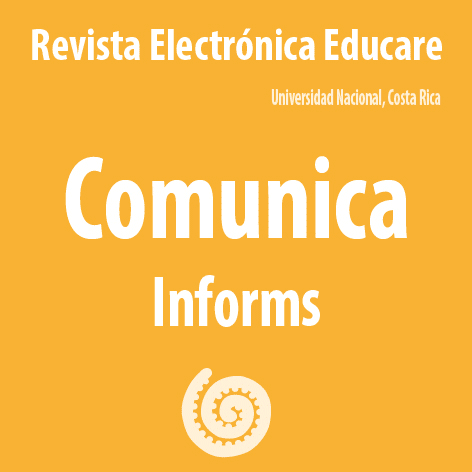Creating Space for Visual Ethnography in Educational Research
DOI:
https://doi.org/10.15359/ree.23-2.19Keywords:
educational research, visual ethnography, visual methods, ethics, bias.Abstract
This article maps the territory of visual ethnography as a key and accessible research methodology in education. It aims to provide an overview and to present theory and practice for future research. The origins and principles of visual ethnography are disclosed as well as some methods to gather data. From the premise that either created by the researcher, by the participants, or through collaboration between both, images may be the core of analysis of social and cultural views and perceptions of students, educators, administrators and community members. The author addresses ethical issues like confidentiality, and highlights possible biases like authenticity, negotiated construction, trustworthiness, and deception of information. The main conclusions highlighted the importance of visual ethnography as a key methodology to elicit rich data that access students’ voices, the space for participatory techniques, and the role of technology as an undeniable participant.
References
Ardévol, E. (2012). Virtual/visual ethnography: Methodological crossroads at the intersection of visual and internet research. In S. Pink (Ed.), Advances of visual methodology (pp. 74-94). London: SAGE. doi: https://doi.org/10.4135/9781446250921.n5
Banks, M. (2007). Using visual data in qualitative research. London: SAGE. doi: https://doi.org/10.4135/9780857020260
Banks, M., & Morphy, H. (Eds.). (1997). Rethinking visual anthropology. London: Yale University Press.
Bland, D. (2018). Using drawing in research with children: Lessons from practice. International Journal of Research & Method in Education, 41(3), 342-352. doi: https://doi.org/10.1080/1743727X.2017.1307957
Bloomberg, L. D., & Volpe, M. (2016). Completing your qualitative dissertation: A road map from beginning to end. Thousand Oaks, CA: SAGE.
Frith, H., Riley, S., Archer, L., & Gleeson, K. (2005). Imag(in)ing visual methodologies. Qualitative Research in Psychology, 2(3), 187-198. doi: https://doi.org/10.1191/1478088705qp037ed
Guillemin, M. (2004). Understanding illness: Using drawings as a research method. Qualitative Health Research, 14(2), 272-289. doi: https://doi.org/10.1177/1049732303260445
Harris, A., & Guillemin, M. (2012). Developing sensory awareness in qualitative interviewing: A portal into the otherwise unexplored. Qualitative Health Research, 22(5), 689-699. doi: https://doi.org/10.1177/1049732311431899
Kharel, D. (2015). Visual ethnography, thick description and cultural representation. Dhaulagiri Journal of Sociology and Anthropology, 9. 147-160. doi: https://doi.org/10.3126/dsaj.v9i0.14026
Kilburn, D., & Earley, J. (2015). Disqus website-based commenting as an e-research method: Engaging doctoral and early-career academic learners in educational research. International Journal of Research & Method in Education, 38(3), 288-303. doi: https://doi.org/10.1080/1743727X.2015.1026253
Kuschnir, K. (2016). Ethnographic drawing: Eleven benefits of using a sketchbook for fieldwork. Visual Ethnography Journal, 5(1). 103-134. doi: 10.12835/ve2016.1-0060
LeCompte, M. D., & Preissle, J. (2003). Ethnography and qualitative design in educational research. San Diego, CA: Academic Press.
Legge, M. F., & Smith, W. (2014). Teacher education and experiential learning: A visual ethnography. Australian Journal of Teacher Education, 39(12). Retrieved from https://files.eric.ed.gov/fulltext/EJ1047070.pdf
Lomax, H. J. (2012). Shifting the focus: Children’s image-making practices and their implications for analysis. International Journal of Research & Method in Education, 35(3), 227-234. doi: https://doi.org/10.1080/1743727X.2012.713932
MacDougall, D. (1998). Transcultural cinema. Princeton: Princeton University Press.
McGuigan, J. (1997). Cultural methodologies. London: SAGE. doi: https://doi.org/10.4135/9781446250396.n1
Mitchell, C., Theron, L., Stuart, J., Smith, A., & Campbell, Z. (2011). Drawings as research method. In L. Theron, C. Mitchell, A. Smith, & J. Stuart (Eds.), Picturing research: Drawings as visual methodology (pp. 19-36). Rotterdam, The Netherlands: Sense. doi: https://doi.org/10.1007/978-94-6091-596-3_2
O’Brien, V., Dhuffar, M., & Griffiths, M. (2014). Collaborative visual ethnography: Practical issues in cross-cultural research. SAGE Research Method Cases. doi: https://doi.org/10.4135/978144627305014533924
Pink, S. (2012). Advances in visual methodology. In S. Pink (Ed.), Advances in visual methodology (pp. 3-16). London: SAGE. doi: https://doi.org/10.4135/9781446250921
Pink, S. (2013). Doing visual ethnography. Thousands Oaks, CA: SAGE.
Reeves, S., Kuper, A., & Hodges, B. D. (2008). Qualitative research methodologies: Ethnography. BMJ: British Medical Journal, 337(7668), 512-514. doi: https://doi.org/10.1136/bmj.a1020
Schembri, S., & Boyle, M. V. (2013). Visual ethnography: Achieving rigorous and authentic interpretations. Journal of Business Research. 66(9), 1251-1254. doi: https://doi.org/10.1016/j.jbusres.2012.02.021
Tobin, J., & Hsueh, Y. (2007). The poetics and pleasures of video ethnography of education. In R. Goldman, R. Pea, B. Barron, & S. J. Derry (Eds.), Video research in the learning sciences (pp.77-92). NY: Lawrence Erlbaum Associates.
Xu, L., Widjaja, W., & Ferguson, J. (2018). Seeing through the eyes of the teacher? Investigating primary school teachers’ professional noticing through a video-based research methodology. International Journal of Research & Method in Education. doi: https://doi.org/10.1080/1743727X.2018.1499016
Downloads
Published
How to Cite
Issue
Section
License
1. In case the submitted paper is accepted for publication, the author(s) FREELY, COSTLESS, EXCLUSIVELY AND FOR AN INDEFINITE TERM transfer copyrights and patrimonial rights to Universidad Nacional (UNA, Costa Rica). For more details check the Originality Statement and Copyright Transfer Agreement
2. REUTILIZATION RIGHTS: UNA authorizes authors to use, for any purpose (among them selfarchiving or autoarchiving) and to publish in the Internet in any electronic site, the paper´'s final version, both approved and published (post print), as long as it is done with a non commercial purpose, does not generate derivates without previous consentment and recognizes both publisher's name and authorship.
3. The submission and possible publication of the paper in the Educare Electronic Journal is ruled by the Journal’s editorial policies, the institutional rules of Universidad Nacional and the laws of the Republic of Costa Rica. Additionally, any possible difference of opinion or future dispute shall be settled in accordance with the mechanisms of Alternative Dispute Resolution and the Costa Rican Jurisdiction.
4. In all cases, it is understood that the opinions issued are those of the authors and do not necessarily reflect the position and opinion of Educare, CIDE or Universidad Nacional, Costa Rica. It is also understood that, in the exercise of academic freedom, the authors have carried out a rogorous scientific-academic process of research, reflection and argumentation thar lays within the thematic scope of interest of the Journal.
5. The papers published by Educare Electronic Journal use a Creative Commons License:













 The articles published by Educare Electronic Journal can be shared with a Creative Commons License:
The articles published by Educare Electronic Journal can be shared with a Creative Commons License: 



